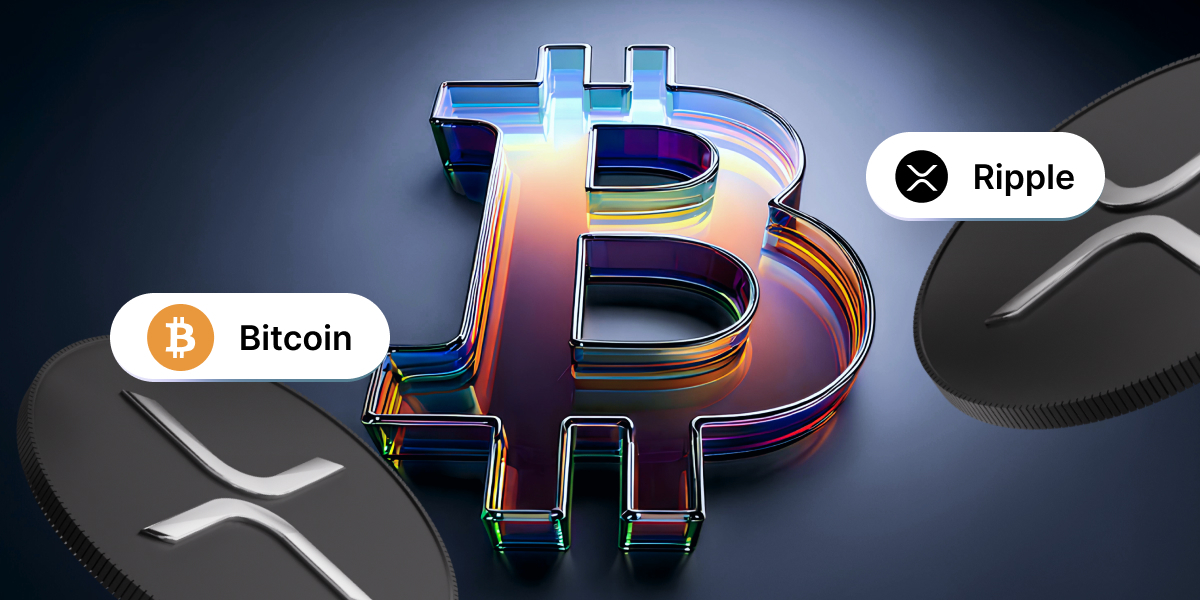When it comes to approaching the stock market, there are so many different options across so many different countries, and of course with so many different publicly listed companies. This can be quite intimidating and difficult to follow as certain companies can be affected differently, but there are other options which are seen as much safer alternatives.
Many traders like to look at major stock indices when they come to trading as the idea of an index is that it groups some of the bigger, better, and more well-performing together so that their gains are spread across, and their losses are somewhat mitigated.
One of the most popular stock exchange indexes is the S&P 500. This is a benchmark index on the stick market that measures the stock performance of 500 large companies listed on stock exchanges in the United States. It is one of the most commonly followed equity indices, and many consider it to be one of the best representations of the U.S. stock market.
Because of this, the S&P 500 is often followed to determine the health of the stock markets in the USA, but globally as well seeing as many of the companies in the 500 have a strong influence over the global markets. The reason why this index is such a powerful one is that the companies involved have a huge sway on the market, but it is usually in an upward trend, which is positive for investors.
S&P 500 Overview
| Current price for today (19 April 2025) | $5296.8 |
| Price Change 24h | 0% |
| Price Change 7d | -1.2% |
S&P 500 historical overview
The S&P 500 has become a popular investing index since its initiation in 1957. It was introduced by Standard & Poor’s in 1957 as a large cap index to track the value of 500 large corporations listed on the New York Stock Exchange (NYSE) and the NASDAQ Composite. In this sense, it became a bigger barometer of the overall health of the US economy than the Dow Jones Industrial Average.
What the history of this index shows is that because it is somewhat of a representation of the health of the American economy and space, it is often influenced by factors that affect the entire country. For example, during its first 10 years, the value of the index rose to nearly 700 points, reflecting the economic boom that followed World War II.
- However, from 1969 to early 1981, the index gradually declined where it fell to a point under 300 with the US economy struggling with stagnant growth and high inflation.
So, this index really is a bit of a bellwether of the US economy and this is important to note because when things are going well for America, the index will be higher, but if the opposite happens, things can go the other way.
The index opened at 386.36 points and as explained it has risen to over 700 points after the war, and slumped back down again in economic stagnation. But, from 1982 to 2000, stock market prices rose and the S&P 500 climbed 1,350%.
The factors that contributed to the rise in stock prices were things like interest rates trending lower, strong global economic growth as a result of increasing levels of globalisation, a rise in the middle class, technological innovations, a stable political climate and falling commodity prices.
Top factors that impacted S&P 500
It is probably a good time to delve deeper into the factors that have been known to influence the index as we have come to the understanding that what is bad for the US economy is bad for the index, but there is a lot more to it than that.
The stock markets are easily influenced by negative and positive news as these impact the companies involved in the market and their possibility of being profitable. So, there are three key factors that have made major impacts on the charts in the past years.
Federal reserve rate hikes
The Federal Reserve, which is the department that controls the money, and basically the economy, can have a huge role to play in the way the stock markets move. Through 2020, the Fed started taking a patient, dovish stance, which meant that interest rates were halted, then lowered.
Inflation
That being said, during 2022 the inflation numbers in the United States started to get out of hand, right along with the rest of the world. The central bank started to raise interest rates quite aggressively, as they need to bring down demand. While initially believing that inflation was “transitory”, the labor market in the United States has shown that companies are still hiring hand over fist, which drives up demand and therefore inflation threats linger.
Liquidity infusion
Part of the problem was the massive amount of liquidity added to the system during the COVID-19 panic. The central bank did quite a bit of quantitative easing to prop up the economic markets, and now all of that liquidity is starting to be seen in the form of inflation as there is too much money chasing far too little goods.
While lower interest rates will quite often send money chasing stocks for higher returns, higher interest rates have the exact opposite effect on not only the S&P 500, but the Dow Jones Industrial Average, and all of the other major indices. Most traders will simply forgo taking the risk of the stock market in order to stick with a guaranteed return in the bond market if rates are high enough.
S&P 500 forecast for 2024
Any S&P 500 price forecast for the 2024 year ahead is going to have to be taken with a lot of concern, as there are a lot of moving pieces. With this in mind, past performance should be kept in the back of your mind.
The S&P 500 has generally done well for investors over the longer term, but it should be remembered that the last 14 years have been years in which we’ve seen a lot of stimulus coming from the Federal Reserve.
As long as interest rates remain very weak, it does make quite a bit of sense that “There is no other alternative” for US investors to make money. However, the financial situation has most certainly changed, as the Federal Reserve has recently started to tighten monetary policy.
Previously, we had seen growth stocks perform very well, as cheap money tends to find its way into startups and countries that are growing rapidly. However, once the bear market entered the psyche of traders, those who had been chasing “easy money” started losing them. Uncertainty grows as many anticipate a new bull run that might change the situation.
Wall street strategists predictions
When it comes to accessing the future of the index and its performance, it is vital to process wall street forecasts in order to better understand what lays ahead.
Tom Lee, one of wall street’s top economists and Head of Investments at Fundstrat Advisors supports a positive scenario, stating that although the S&P 500 has had a rough ride in the last year’s plunge, the reality is that sooner or later the Fed may have to change its monetary policy, and that could kick off a rally in 2024, which he anticipates to really start to pick up steam.
After all, rising rates had been one of the killers of stock markets in late 2022, so if rates start to drop, it’s possible that we will go back to seeing a lot of money flowing into the equity market. He is currently calling for a year end target at the 5200 level, after the bearish pressure of 2023 will finally fade away.
Jim Cramer, widely followed host of CNBC, has a S&P 500 price forecast for 2024 at an average target of 5000, as he believes sooner or later the economic data and the corporate earnings coming out of Wall Street will force the Feds to turn and start loosening monetary policy.
Things could be starting to change though, as the stock market heading upwards and the banking system in need of recovery after quite a bit of stress. The economic outlook is starting to sour a bit, and therefore the volatile market may enter a “bad news is good news” phase again, as we have seen multiple times after the Great Financial Crisis, where traders only care about liquidity.
Long gone are the days of worrying about corporate positive earnings growth. At least from the longer-term point of view.
S&P 500 forecast for 2025 and beyond
A S&P 500 price forecast for 2025 needs to take a lot of moving pieces into account. During the 2023 year to date surge and moving into 2024, we saw a lot of crosswinds and controversial price movements due to geopolitical issues, especially the Ukrainian war.
Furthermore, supply chains had been broken, and therefore caused mass inflation. This being the case, it caused the Federal reserve to change its economic outlook, and started to tighten monetary policy as inflation was in danger of getting out of hand.
Going forward, economic data will be looked at quite closely and parsed multiple times in order to make trading decisions, but it’s more likely than not that the year 2025 will have already seen some type of crisis come and go, and therefore it does make a lot of sense that we will eventually see bullish pressure in the year.
As we go further into the future, there will obviously be new crises, as the boom and bust cycle continues to shrink. That being said, it is quite common to see extremes every couple of years. And the possibility is not excluded, that 2025 could become a very decisive year.
Future S&P 500 predictions
Looking beyond 2024, there is bound to be some real movements in the stock markets as volatility is increasing.
S&P predictions for next 5 years
It is assumed that the index will continue to rally going forward, just as most forecasts predict, but the reality is that it’s very difficult to predict the unknown. After all, how could the economists forecast a global pandemic that caused so much havoc in the market? Nonetheless, it does tend to rise over time and there’s no reason to believe that it will be any different.
The S&P 500 continues to attract a lot of inflow around the world, as it is one of the more mature markets. It is generally trusted well beyond many other stock indices around the world, so therefore it’s one of the first ones to move in either direction.
It is likely that looking at the charts could give us a bit of a heads up, and it does seem like the pullback back in 2023 was very strong. Whether or not there is further downside to go in 2024 remains to be seen, but history tells us that the market does eventually turn around and go higher. One would have to assume that by the time we get to 2029, we will have easily made a fresh, new high.
Looking back at the charts, the pullback for the parish market of past 2023 is nothing out of the ordinary, so unless we get some type of significant change in the global economic outlook, one would think that the buyers will certainly return and perhaps in this market much higher, perhaps trying to go as high as 5000 over the next couple of years.
In fact, some pundits believe that the index will be as high as 10,000 by the time we get to 2029. A lot of what could be a major determinant to that being the case is whether or not the US dollar loses a lot of strength.
Stock market forecast for the next decade
Since 1947, the S&P 500 has produced roughly 8% annual gains, suggesting the current environment may be a historically bad entry point for investors. In terms of a price target, Bank of America is targeting S&P 500 5,150 to 8,700 with its S&P 500 price forecast for 2030.
| Year | Price |
| 2024 | 5100 |
| 2025 | 5700 |
| 2026 | 5950 |
| 2027 | 6200 |
| 2028 | 6725 |
| 2029 | 7300 |
| 2030 | 8900 |
| 2031 | 9350 |
| 2032 | 10200 |
However, it is worth noting that some others are calling for a move as high as 10,000 by the time we get to 2032 despite past year of 2023 not reaching even a half of this predicted value, as could be seen on the forecast table with a 2023 reference comparison.
Summary: what is the future of the S&P 500
While things seem relatively poor for the S&P 500 as things stand because both the markets and the economy are in a position that is not very fruitful for growth, there is a positive side to it.
The drop seen in the market correlates to the impact on the economy, but the pandemic is already showing final signs of letting up and recovering and this will mean a return to strength for the index a a positive sentiment for the market.
The knowledge that the economy, and the markets, will recover is almost universally felt, the time it takes and how well it recovers is another thing, but for many traders this represents a perfect time to enter the market and take advantage of the probable upswing in the coming months, if not years.
In order to take advantage of the lows that the markets are currently going through and the expected return to new highs after the pandemic, it is a good time to find a platform that offers you the chance to trade the S&P 500 — such as PrimeXBT: you can sign up here.
What determines S&P 500?
The S&P 500, while not a direct reflection of the health of the US economy, has a big correlation to what is happening with the economy as it covers the top 500 companies in the US and their effectiveness is based on the economy. As a general rule, the S&P 500 forecast is higher in times of economic strength, and lower in times of economic weakness.
How often do S&P 500 companies change?
There is no predetermined time for the companies in the S&P 500 to change, but rather there are ongoing changes as companies drop out and then replace them. This is also happening more often than in the past years.
Why is the S&P 500 so important?
The S&P 500 is both popular and important as it takes the best companies that an investor can look at investing in and out of them in one place. S&P 500 is indicative of the success of big business in the country. In fact, most well-known analyst have an S&P 500 forecast that is widely followed, as it is a good way to measure the entire health of the stock market in general.
Can you buy S&P 500?
The S&P 500 is not an actual stock that one can invest in, rather it is an index that the investment is made in. Instead of purchasing 500+ separate stocks, it's an opportunity to invest in a single fund. Essentially, you look for opportunities to pick up the S&P 500 at cheaper levels, according to your S&P 500 forecast.
Does the S&P 500 pay dividends?
The S&P 500 index tracks stocks, many of which pay out a regular dividend. The dividend yield of the index is the amount of total dividends earned in a year divided by the price of the index. Historical dividend yields for the S&P 500 have typically ranged from between 3% to 5%.
The financial products offered by the Company are complex and come with a high risk of losing money rapidly due to leverage. These products may not be suitable for all investors. Before engaging, you should consider whether you understand how these leveraged products work and whether you can afford the high risk of losing your money.
The Company does not accept clients from the Restricted Jurisdictions as indicated in our website/ T&C. Some services or products may not be available in your jurisdiction.
The applicable legal entity and its respective products and services depend on the client’s country of residence and the entity with which the client has established a contractual relationship during registration.




